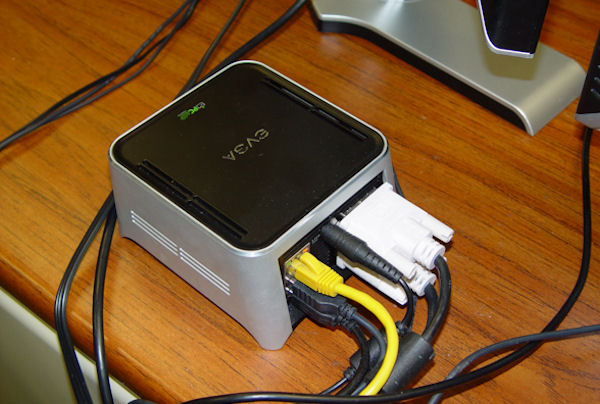UM-Flint Converting to "Green" Computer Labs

The traditional desktop computers that filled the University of Michigan-Flint computer labs will soon be technology of the past. In fact, you could say the computer labs will be computerless labs, or "green" labs.
"The green labs are different in that they do not use a traditional desktop PC," said Information Technology Services (ITS) Director Scott Arnst. "Instead, we use what is commonly called a zero client that connects to servers in our data centers to access a Microsoft Windows 7 desktop."
There are some big cost benefits in both purchasing and operating the zero client units, which are the size of a club sandwich.
"They cost less to purchase, have no moving parts so are less likely to break, and therefore, have a significantly longer usable lifespan; we are estimating 7 years or more," noted Arnst. "In a traditional desktop lab, we replace the computers every four years."
The longer life means student technology fee dollars can be redirected to other technology needs for the campus. Zero clients also consume significantly less power. The zero client will consume on average 9 watts of power while running, whereas a desktop consumes around 80-100 watts, which means a smaller carbon footprint. They also generate significantly less heat than a traditional desktop, which means reduced cooling costs. Arnst anticipates annual cost savings in reduced power consumption and cooling in the open labs at about $16,400.
Another benefit is that it is much easier to maintain the Windows operating system and all the software. In a traditional desktop lab, the computers have to be "re-imaged" once a week to clean them up to ensure that there is no malware, etc., and ITS technicians have to "touch" each desktop independently. With zero clients, the process is much faster, much easier.
"We simply have to update a single "golden image" on our servers and all the machines are updated immediately. This makes patching software and installing new software a much quicker and simpler process," according to Arnst.
In addition, ITS uses what is called a non-persistent desktop, this means that when a student logs off of the zero client computer, the entire instance of Windows 7 that they were using and anything they did to it (intentionally or unintentionally), is completely destroyed and is not used by anyone else ever again. Each student gets a brand new, fresh instance of Windows 7 every single time they log on.
When ITS finishes with the zero client switchover next summer with MSB 206, there will be 403 of the units in operation on campus. So far, over 300 of the older desktops have already been replaced.
Related Posts
No related photos.
UM-Flint News
The Office of Marketing & Communications can be reached at [email protected].